How to Choose the Right Coffee Brewing Technique at Home
Coffee is more than just a beverage; it's a ritual for many, with countless ways to brew the perfect cup. Understanding different coffee brewing techniques can elevate your coffee experience, allowing you to enjoy various flavor profiles and aromas. With a myriad of brewing methods available, from classic French press to the modern pour-over, this article will guide you in selecting the best technique tailored to your taste preferences and lifestyle.
In this exploration of coffee brewing techniques, we will delve into the top five methods, provide actionable tips for each, and address common misconceptions that may arise. Whether you're a seasoned barista or just starting your coffee journey, this guide will equip you with the knowledge needed to brew exceptional coffee at home.
Understanding Coffee Brewing Techniques
What Are Coffee Brewing Techniques?
Coffee brewing techniques refer to the various methods used to extract flavors from coffee grounds, resulting in a finished beverage. Each technique has its unique characteristics, influencing not only the taste but also the aroma, texture, and overall experience of the coffee. Selecting the right brewing method is essential, as it can enhance or diminish the coffee's natural flavor.
Factors Influencing Your Choice
When choosing a brewing technique, consider the following factors:
-
Time: Some methods require more time than others, affecting your morning routine.
-
Equipment: The type of equipment you have or are willing to invest in can narrow your options.
-
Flavor Profile: Different methods extract different flavors, impacting your overall coffee experience.
-
Convenience: Consider how easy the method is to execute, especially if you're busy or prefer a quick brew.
Understanding these factors can help you make an informed decision about which coffee brewing technique will suit your lifestyle best.

Top 5 Coffee Brewing Methods for the Perfect Cup
1. Pour-Over Coffee
Pour-over coffee is celebrated for its ability to highlight complex flavor profiles. This technique involves manually pouring hot water over coffee grounds, allowing for precise control over brewing time and temperature.
Equipment Needed
-
Pour-over dripper (e.g., Hario V60, Chemex)
-
Coffee filter
-
Kettle (preferably a gooseneck for accuracy)
-
Freshly ground coffee
Steps for Brewing Pour-Over Coffee
-
Place the coffee filter in the dripper and rinse it with hot water to remove any paper taste.
-
Add freshly ground coffee (approximately 1-2 tablespoons per 6 ounces of water).
-
Slowly pour hot water over the coffee grounds, starting from the center and moving outward.
-
Allow the coffee to brew for about three to four minutes, adjusting the pouring speed for desired strength.
Benefits
-
Enhanced flavor clarity
-
Greater control over brewing variables
-
Aesthetic presentation
2. French Press
The French press is a classic brewing method that offers a rich and full-bodied cup of coffee. This immersion technique allows the coffee grounds to steep in hot water, extracting robust flavors.
Equipment Needed
-
French press
-
Coarse coffee grounds
-
Kettle
Steps for Brewing French Press Coffee
-
Add coarse coffee grounds to the French press (about 1 tablespoon per 4 ounces of water).
-
Heat water to just below boiling and pour it over the coffee grounds.
-
Stir gently and place the lid on the French press.
-
Let it steep for four minutes before pressing the plunger down slowly.
Benefits
-
Full-bodied flavor
-
Simple and easy to use
-
Requires minimal equipment
3. Espresso
Espresso is the foundation for many coffee beverages, including lattes and cappuccinos. This method forces hot water through finely-ground coffee, creating a concentrated shot of coffee with a thick crema.
Equipment Needed
-
Espresso machine or stovetop Moka pot
-
Finely ground coffee
Steps for Brewing Espresso
-
Preheat your espresso machine or Moka pot.
-
Pack finely ground coffee into the portafilter (about 18-20 grams for a double shot).
-
Lock the portafilter into the machine and start the brew cycle.
-
Extract for about 25-30 seconds for optimal flavor.
Benefits
-
Intense flavor and aroma
-
Quick preparation time
-
Versatile for various coffee drinks
4. Cold Brew
Cold brew coffee has gained popularity for its smooth, less acidic taste. This method involves steeping coarsely ground coffee in cold water for an extended period, usually overnight.
Equipment Needed
-
Cold brew coffee maker or jar
-
Coarse coffee grounds
-
Water
Steps for Brewing Cold Brew Coffee
-
Combine coarsely ground coffee with cold water in a 1:4 ratio.
-
Stir to ensure all grounds are saturated.
-
Let the mixture steep in the refrigerator for 12-24 hours.
-
Strain the coffee using a fine mesh or coffee filter.
Benefits
-
Smooth, low-acid flavor
-
Refreshing served over ice
-
Can be made in large batches
5. Aeropress
The Aeropress is a versatile and portable brewing method that combines immersion and pressure to create a rich cup of coffee. It’s favored for its simplicity and ease of cleaning.
Equipment Needed
-
Aeropress
-
Coffee filter
-
Coarsely ground coffee
Steps for Brewing Aeropress Coffee
-
Place a coffee filter in the cap and rinse it with hot water.
-
Add coarsely ground coffee (about 1-2 tablespoons) into the Aeropress chamber.
-
Pour hot water over the coffee and stir gently.
-
After 30 seconds, press down slowly to extract the coffee.
Benefits
-
Quick and easy preparation
-
Versatile for different brewing styles
-
Compact and portable
Common Mistakes to Avoid
When experimenting with various coffee brewing techniques, it's essential to avoid common pitfalls that can affect the flavor and quality of your coffee:
-
Using the Wrong Grind Size: Different brewing methods require specific grind sizes. For instance, a coarse grind is ideal for French press, while fine grind is best for espresso.
-
Incorrect Water Temperature: Water that is too hot can scorch the coffee, while water that is too cool can under-extract flavors. Aim for temperatures between 195°F and 205°F for optimal extraction.
-
Neglecting Coffee Freshness: Coffee is best enjoyed when brewed with fresh beans. Store your coffee in an airtight container and grind it just before brewing.
Conclusion: Applying Coffee Brewing Techniques with Ratio Coffee
Choosing the right coffee brewing technique can significantly enhance your coffee experience, allowing you to appreciate the nuances of different flavors and aromas. By understanding the various methods, from pour-over to cold brew, you can tailor your brewing approach to suit your preferences.
If you're ready to elevate your coffee experience, visit our website or contact us for more information about our products. Enjoy the journey of discovering your ideal coffee brewing method with Ratio Coffee.
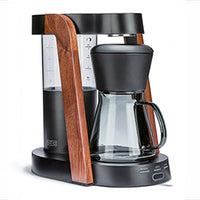 Ratio Eight S2
Ratio Eight S2
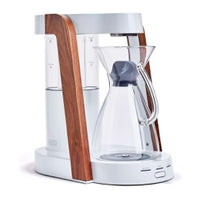 Ratio Eight Original
Ratio Eight Original
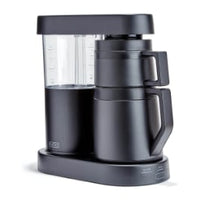 Ratio Six
Ratio Six
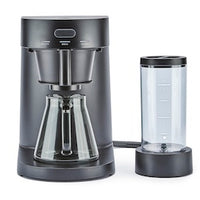 Ratio Four
Ratio Four
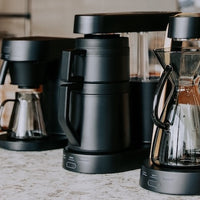 Compare Machines
Compare Machines






